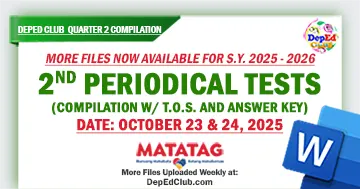
Last updated: October 10, 2025. The second quarter deepens understanding and strengthens applied learning across all MATATAG subjects. Each subject Continue Reading …

Last updated: October 10, 2025. The second quarter deepens understanding and strengthens applied learning across all MATATAG subjects. Each subject Continue Reading …
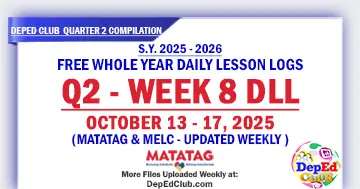
Last Updated: October 8, 2025. This week’s academic lessons highlight the continued growth of learners through balanced academic instruction and value Continue Reading …
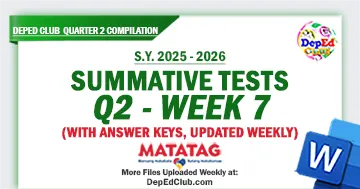
Last updated: October 8, 2025. This week’s lessons build on essential skills across subjects by combining comprehension, problem-solving and character formation. Continue Reading …

Last updated: October 8, 2025. The second quarter of the school year marks the shift from learning routines to applying knowledge Continue Reading …
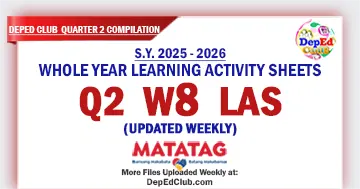
Last updated: October 8, 2025. Assessment in Week 8 focuses on how learners have developed their understanding of both foundational and Continue Reading …
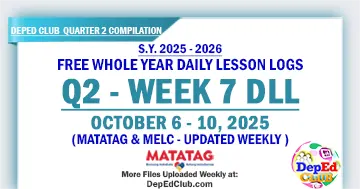
The Quarter 2 Week 7 Daily Lesson Log MATATAG & MELC DLL outlines clear instructional goals to strengthen both academic Continue Reading …

Last updated: October 1, 2025. This week’s lessons span across languages, mathematics, values education, science and cultural subjects, ensuring learners develop Continue Reading …
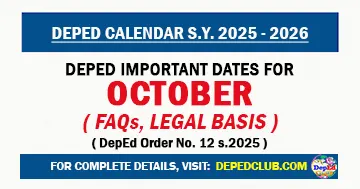
October 2025 is another significant month in the DepEd calendar that brings together key academic milestones, national observances and institutional Continue Reading …
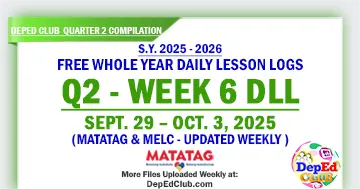
Daily Lesson Log provides teachers with structured and ready-to-use materials across all subjects. Each log is aligned with the Quarter Continue Reading …

Updated Daily. Every school day, thousands of Filipino students begin their mornings with something small but meaningful: a single word Continue Reading …

The 2nd quarter assessments track how well Grade 6 learners have understood the competencies outlined in the second quarter. These Continue Reading …
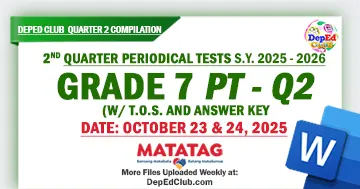
The second quarter of Grade 7 focuses on reinforcing foundational knowledge while advancing learners’ skills across academic areas. In English Continue Reading …
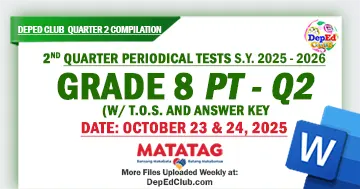
The second quarter of Grade 8 strengthens learners’ foundational knowledge while introducing higher-order thinking skills across subject areas. Students refine Continue Reading …
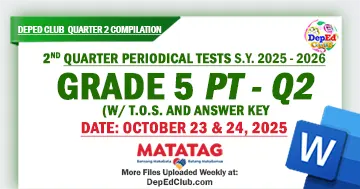
Quarter 2 assessments are essential in measuring how learners grasp the lessons taught throughout the grading period. For Grade 5, Continue Reading …
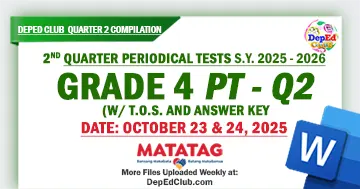
The 2nd periodical exams are essential in measuring how well learners have mastered the competencies taught across different subjects in Continue Reading …
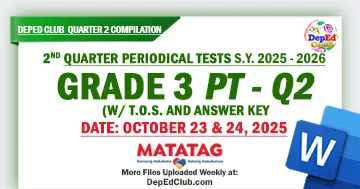
The 2nd quarter exams check how Grade 3 learners progress across different subjects in the second quarter. It measures not Continue Reading …
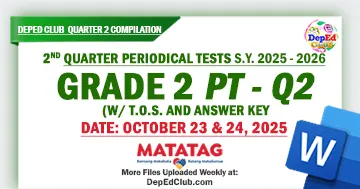
Last updated: October 10, 2025. The 2nd Periodical Test ensures that Grade 2 learners demonstrate steady progress in literacy, numeracy, Continue Reading …